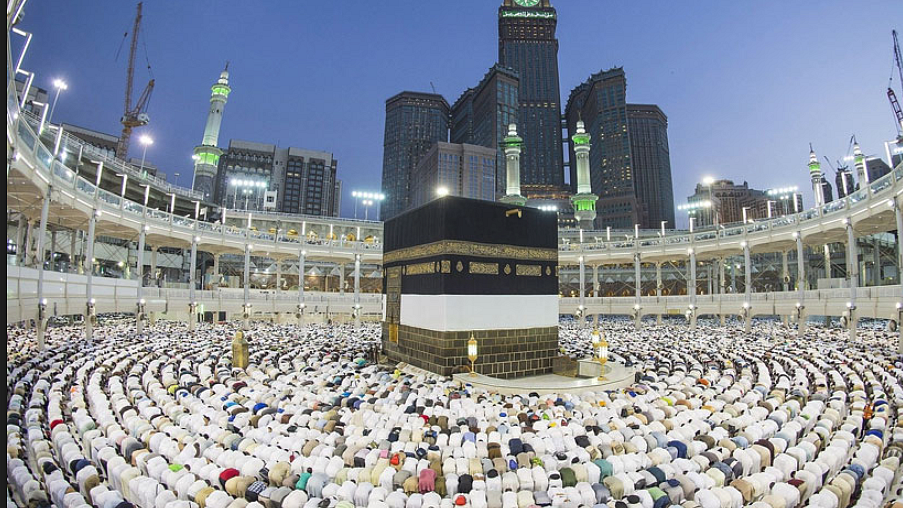Haj wasn’t the only subsidy, Govt of India must come clean on all religious spendings
MCC, Gujarat has sought a white paper on Central govt’s expenditure on religious activities so that the country can know about how much the govt is spending on the promotion of which religion

Following the Government of India decision to stop Haj Subsidy to Muslims, a minority rights organisation has, in a letter to Union Home Minister Rajnath Singh, sought a white paper from the Government of India (GoI) on the types of subsidies being offered to different religious organisations.
Signed by Majuahid Nafees of the Minority Coordination Committee (MCC), Gujarat, the letter says that the NDA government progressively reduced the Haj subsidy ever since it came to power – it was ₹750 crore two years ago, which came to down to ₹250 in 2017-18. Yet, it adds, the whole effort is to bring about a “divide” communal divide by making it appear that only Muslims alone cornered all religious subsidies.
Objecting to the effort to paint stopping of Haj subsidy as a “big saving from wasteful expenditure”, MCC claims, how, a few years ago, the Kumbh festival in Allahabad carried a budget of ₹1,150 crore, all funded by the Government of India. It recalls, in 2014, the UP government was accused of “misusing” ₹800 crore of this amount
“Last year”, MCC says, “The Madhya Pradesh government spent ₹3,400 crore, while the Central government spent ₹100 crores for the Singhast Maha Kumbha in Ujjain.” It adds, “This apart, different governments spend huge funds for helping pilgrims visiting Badrinath, Kedarnath, Kailash Mansarovar, Amarnath and other spots.”
“Thus”, MCC says, “The Government of Madhya Pradesh gives a subsidy of ₹50,000 for Kailash Mansarovar Yatra per passenger”.
Specifically referring to Gujarat, MCC says, the state government “has set up what is called Pavitra Yatra Dham Vikas Board for the “development” of 338 pilgrim spots across the state, even as providing a budgetary allocation of ₹106.69 crore in 2017-18. It adds, “The state government runs a course to teach the rituals of Hinduism, funded by the state.”
Further pointing out that the present government of Uttar Pradesh has “begun programmes for the renovation and spiritual development of pilgrim spots of Kashi and Ayodhya, allocating ₹800 crore”, MCC says, “The question arises whether one should focus on government spending on Haj pilgrims alone.”
“We believe that the state should not interfere in religious practices, which is a matter of personal choice”, MCC says, even as quoting from a Supreme Court judgement which says, “The relationship between man and God is an individual choice. The state is forbidden to have allegiance to such an activity … Mixing state with religion is not constitutionally permissible.”
It also quotes Article 27 of the Indian Constitution, which states, “No person shall be compelled to pay any taxes, the proceeds of which are specifically appropriated in payment of expenses for the promotion or maintenance of any particular religion or religious denomination.”
MCC also quotes from a Supreme Court order of 2011, Prafull Goradia v. The Union of India, pointing towards how religious funding “violates Article 27” of the Constitution. The order said, “In our opinion Article 27 would be violated if a substantial part of the entire income tax collected in India, or a substantial part of the entire central excise or the customs duties or sales tax, or a substantial part of any other tax collected in India, were to be utilised for promotion or maintenance of any particular religion or religious denomination.”
“In other words, suppose 25 percent of the entire income tax collected in India was utilised for promoting or maintaining any particular religion or religious denomination, that, in our opinion, would be violative of Article 27 of the Constitution”, the order added.
Asking Government of India to “come clean” on the issue, MCC has sought a white paper on whatever the Central government spends on religious pilgrims, festivals, meeting, places of worship so that the “country can know about how much the government is spending on the promotion of which religion.”
This report was first published in www.counterview.net
Follow us on: Facebook, Twitter, Google News, Instagram
Join our official telegram channel (@nationalherald) and stay updated with the latest headlines